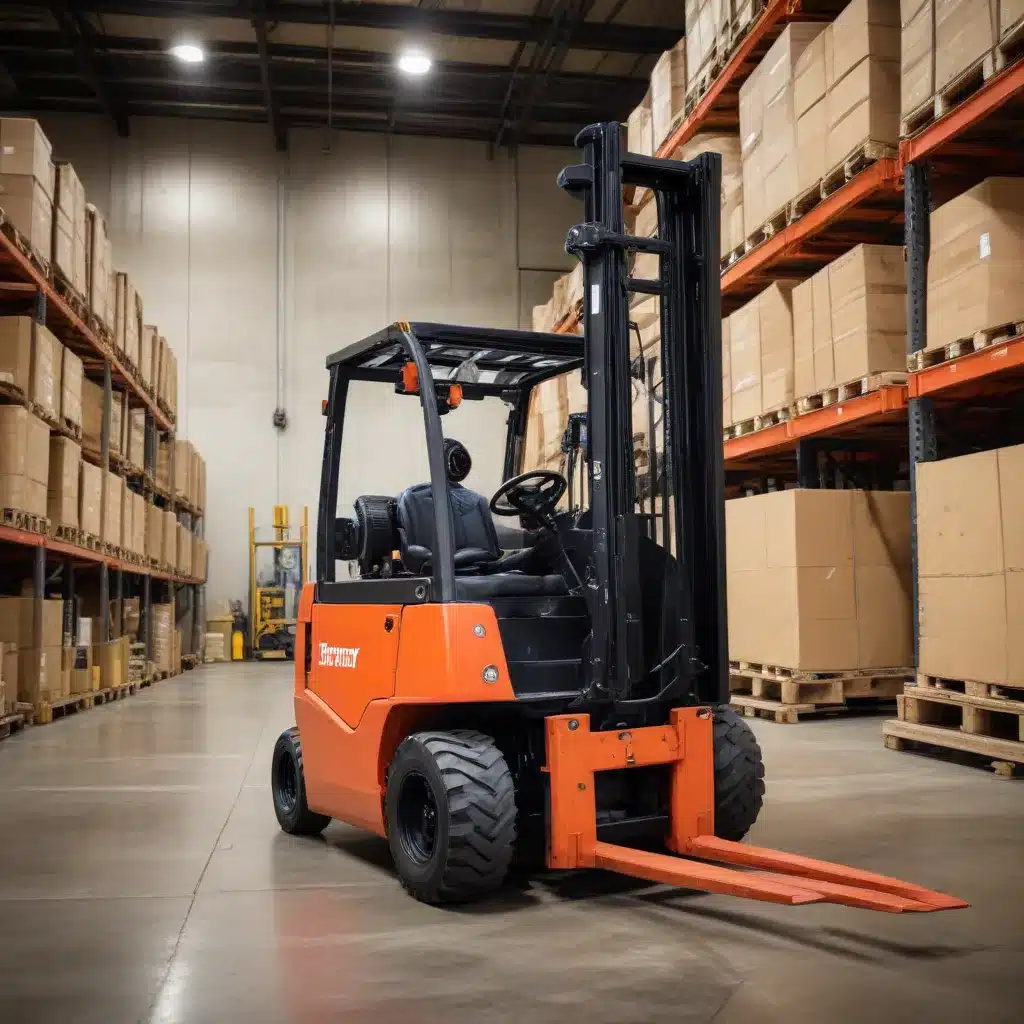
The Importance of Forklift Safety and Ergonomics
Forklift safety and ergonomics are critical considerations for any warehouse or logistics operation. OSHA violation fees can be high, and unsafe behavior can put individuals at serious risk, carrying significant financial implications for your business. As workplaces evolve, ensuring the safety and well-being of employees remains a top priority. By relieving workers from repetitive, strenuous or hazardous tasks, technology creates safer, more productive environments while reducing liability.
Some of the most common forklift safety issues include:
- Operators not being properly trained on a forklift
- Incomplete equipment safety checklists
- Using the wrong forklift for the job
- Cluttered warehouse aisles or faulty/damaged pallets
- Overloading your forklift
- Travelling at excessive speed
- Riding with the load elevated
- Improper back-up techniques
- Improper turning, braking or accelerating
- Improper warnings to others about a forklift in shared spaces
Safety is not just impacted by operator behavior; maintenance plays a big role in keeping a safe and productive environment. Something as common as an oil leak can cause someone to slip, resulting in both downtime and lost productivity. Proper maintenance helps avoid such issues and keeps your operations running smoothly.
Leveraging Technology for Safer Workplaces
Innovative safety solutions can dramatically improve the overall safety and ergonomics of your workplace. Whether tracking employee movements or proximity to moving equipment, wearables monitor hazards and alert workers to potential issues. Did you know that almost 50% of forklift incidents involve pedestrians? Visual cues like line projectors and laser image projectors are an improvement over painted or physical signs, standing up to heavy traffic and easily adapting as your layout shifts.
Falls are among the most common causes of serious work-related injuries and deaths. Providing fall protection, as required by OSHA, is a cost-effective solution for reducing the risk of injury and maintaining a safe work environment. Advanced forklift safety systems like Hyster Reaction and Yale Reliant take things a step further, detecting pedestrians or obstacles in the path of travel. This technology reinforces best practices, limiting equipment performance based on conditions to increase operator awareness and reaction time.
Autonomous Guided Vehicles (AGVs) offer another layer of safety, efficiently transporting goods without harming people or damaging infrastructure. Safety sensors prevent them from running into obstacles. LED safety lights provide clear visual warnings to pedestrians working near forklifts, offering a cost-effective safety solution that’s easy to install.
Prioritizing Ergonomics for Employee Wellbeing
Ensuring your workforce avoids strain and repetitive motion injuries is crucial for both employee wellbeing and your bottom line. Ergonomic lifting solutions like lift tables reduce the need for employees to bend or overreach, which can cause work-related injuries. Pallet rack systems are heavily scrutinized by OSHA and insurance companies due to the significant legal liabilities associated with racking failures. Protective equipment like rack guards provide robust safeguarding against accidental impacts, ensuring the longevity of your storage systems.
Robotic automation can also enhance workplace safety by handling dangerous or physically demanding tasks, such as welding or hazardous chemical handling, without exposing human workers to those risks. Ergo floor mats offer comfort and productivity improvements across industrial work areas, with a durable, slip-resistant design.
The True Costs of Understaffed, Overworked Warehouses
The true dangers are found in understaffed warehouses and overworked employees, further compounded by operational challenges surrounding e-commerce demands, SKU proliferation and seasonal order peaks. Existing staff need to work harder and faster, sometimes taking on extra hours and overnight shifts, just to keep orders flowing out the door on time.
Employees that work alongside automated equipment experience less fatigue. When it comes to warehouse safety, automation matters:
| Human Employees | Autonomous Equipment |
|---|---|
| $30 per hour, fully burdened | $7-$12 per hour |
| Takes time off and requires breaks | Work 24 hours a day without fatigue |
| Prone to lifting and bending injuries | Safe in dangerous facility settings |
| Potential for operator error, especially in cold | Follow all safety protocols |
| Require ongoing OSHA and equipment training | Travel optimized routes at consistent speeds |
| Need supplemental safety equipment | Work well in extreme heat or cold conditions |
Manufacturers and warehouse managers understand the significant impact automation has on productivity and safety. It starts with a risk assessment – are you operating your fleet as efficiently as you could be? Riekes Equipment’s Fleet Management program can identify cost savings and lower stress for your warehousing operations, guaranteed.
Conclusion: Forklift Leasing as a Strategic Approach
When it comes to optimizing your forklift fleet for safety and ergonomics, leasing offers several distinct advantages over buying. Leasing provides the flexibility to regularly upgrade to the latest models with advanced safety features, ensuring your operation keeps pace with evolving technology and industry best practices.
Leasing also allows you to scale your fleet up or down as business needs change, avoiding the capital expense of purchasing new equipment. This can be particularly beneficial during peak seasons or when accommodating rapid growth, without being saddled with underutilized assets.
Perhaps most importantly, leasing shifts the maintenance burden to the dealer, freeing up your internal resources to focus on core operational priorities. Regular professional servicing and access to manufacturer expertise helps maintain a safe, reliable forklift fleet.
By partnering with an experienced forklift leasing provider like Forklift Reviews, you can develop a customized fleet management strategy that aligns with your unique safety, ergonomic and budgetary requirements. Evaluating your options and finding the right balance of leasing, renting and purchasing can unlock significant efficiencies while protecting your most valuable asset – your employees.

